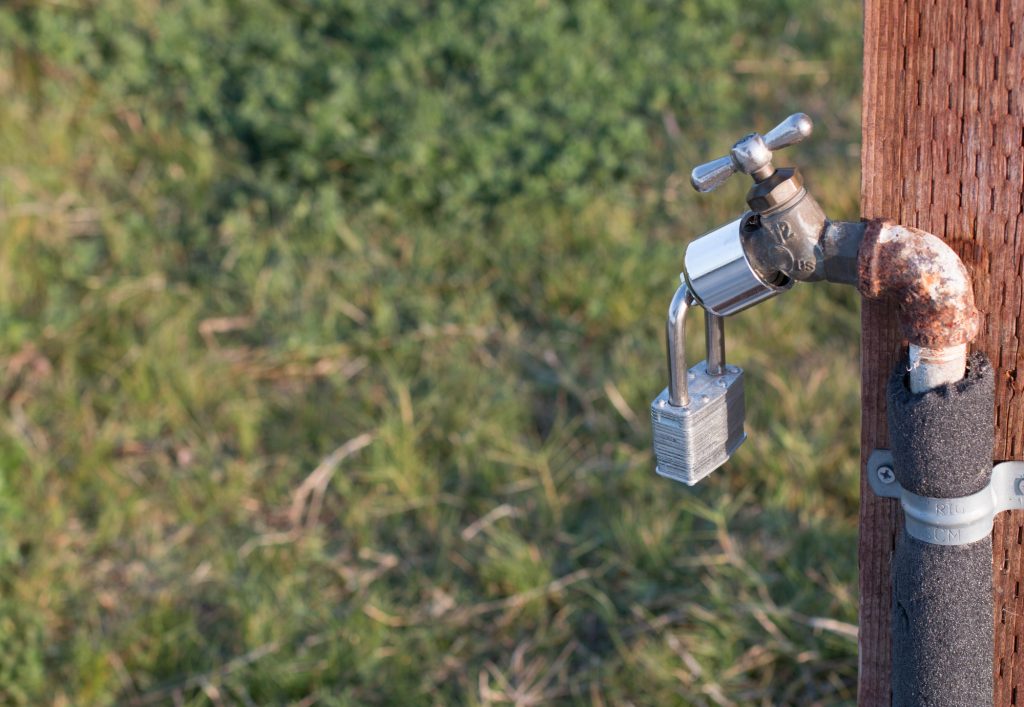
A lush, green lawn can be the crown jewel of your property. But what happens when drought strikes? In today’s world of increasingly unpredictable weather and tightening water regulations, how can you ensure a green lawn? The key is learning to grow a drought-tolerant lawn that will look great no matter the weather.
How do I make my lawn more drought-tolerant?
The best way to protect your lawn from drought is to keep it healthy. A healthy, well-fed lawn will be in better condition to survive whatever hits it, whether that’s high temperatures, less water, weeds, or pests. If you take the time and care to ensure your turf is well-established and healthy, you will be best positioned to keep it alive through a drought.
You can keep your lawn in the best shape by fertilizing it periodically, watering it with the proper sprinkler, and mowing, thatching, and aerating regularly. These steps will keep your lawn’s root system healthy and robust and position it better to withstand drought conditions.
Will grass regrow after drought?
Drought is one of the main culprits behind brown and dying grass. Many people elect not to water their lawns during the summer, but this can be a mistake when there isn’t enough rain to keep the delicate grass roots alive. Grass will naturally go dormant after two or three weeks without water, and most lawns can survive drought conditions for four to six weeks. From about four to six weeks without water, lawns will likely turn brown even if the grass isn’t dead. However, extended periods of hot, dry weather longer than six weeks may kill the lawn.
So can you revive a dead lawn? Unfortunately, if the grass is totally dead due to lack of water, there’s no way to bring it back. However, reviving brown lawns that are simply dormant usually occurs within three to four weeks of resuming regular irrigation.
What is the best grass for drought conditions?
The best way to protect your lawn from drought is to start by installing the right type of turf! The best drought-tolerant lawn varieties for warm-season climates include Bermuda and Zoysia.
Bermuda grass is known for its dense, dark green blades, and is generally touted as the most drought-resistant grass. Bermuda is known as a low water user as it only needs one to 1.25 inches of water weekly, either from rainfall or irrigation, to stay nice and green. It uses its water efficiently through its deep root system. After an extended period of drought conditions, about 7 weeks, Bermuda grass can go dormant for an additional three to four weeks without dying. This means that even after around 10 weeks of drought, Bermuda grass lawns can recover their vibrant green appearance when watering is restored.
Zoysia grass is even more of a water-sipper, as it only needs 0.5 to one inch of water weekly to retain its light/medium green color. Like Bermuda grass, Zoysia also can go dormant for three to four weeks without dying. After an extended drought period of around four weeks, and thanks to complex underground stems called rhizomes, Zoysia can self-repair its dry, drought-damaged turf.
Which is better: Bermuda or Zoysia?
In Georgia and the southeast, two of the best grass varieties to grow for a drought-tolerant lawn are Bermuda and Zoysia, thanks to their low-water needs mentioned above.
Zoysia is a warm-season grass, which makes it perfect for humid Georgia summers. It can handle some shade but prefers the sunlight. Zoysia is a good choice for you if areas of your lawn are shaded. The biggest draw of Zoysia is that it is largely heat- and drought-tolerant, so if there is a dry spell or heatwave, the grass typically won’t lose its attractive color. Another reason Zoysia is popular is that it will stay green longer than other grasses heading into the winter, and it is one of the first to green up again after the cold season.
Bermuda grass is happiest with at least 6 to 8 hours of sun each day and will thrive in areas that don’t get shade. Bermuda grass is better than Zoysia in higher traffic areas where it’s important to have grass that recuperates faster from traffic and damage, as it is thicker and heartier.
What month is best to put grass seed down?
Since we’ve been focusing on warm-climate grass varieties like Bermuda and Zoysia, let’s address the best time to plant these sturdy, drought-tolerant lawns. The best time to plant both Bermuda and Zoysia seeds is in late spring/ early summer, like May or June. This is when temperatures rise above 65 degrees. If you plan to put down Zoysia, it’s best to go with a professional who will know how to prepare and till the area to get as much coverage as possible in the first year of growth.
Should you fertilize your lawn during a drought?
Although fertilization is an important part of maintaining lawn health, you do not want to continue fertilizing during a drought. Fertilizers increase the growth rate of your lawn, so doing this when the lawn lacks water can cause severe stress and result in damaged grass. The best times to fertilize your lawn are in early and late spring, and possibly again in the fall, depending on your climate and turf type.
Should you cut grass during a drought?
During a drought, grass will eventually stop growing and go dormant. While it is still growing, you can continue to mow as often as necessary. Be careful to never remove more than one-third of the grass blades. A drought is also a good opportunity to tune up your mower. Dull blades can rip the grass, leaving jagged edges that quickly dry out and turn brown, especially when water intake is lower. As a drought continues past three or four weeks, you should reduce the frequency or completely halt mowing stressed grass until irrigation resumes.
Why is my grass dying even though I water it?
In Georgia and much of the southeast, we have a warm grass environment coupled with humid conditions. This means that many homeowners will experience brown patches caused by a fungus called Rhizoctonia solani. Often simply referred to as “brown patch”, this moisture-loving fungus typically resides in the soil and consumes decomposing plant matter. While leaving grass clippings on your lawn can be a great and natural way to fertilize your lawn, if you are experiencing brown patches, you should take extra care to remove these clippings so they don’t feed the fungus.
Another reason watered grass can turn brown is if the soil’s pH is too high, meaning the soil is too acidic. You can test the pH with kits from your local hardware or home and garden store, then add the necessary nutrients, like lime or sulfur. In extreme cases, you may need to replace the grass and soil altogether, which can be an opportunity to start fresh with healthy soil and the best turf variety for your climate.
Protecting your lawn from drought
When it comes to maintaining a drought-tolerant lawn, the best defense is a good offense. Start with healthy soil, choose the right turf variety for your climate and property, and maintain it well throughout the spring and summer to defend against drought and stretches of dry weather. Put in the effort and you’ll be rewarded with a beautiful, green lawn.
